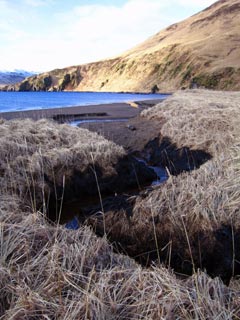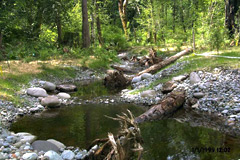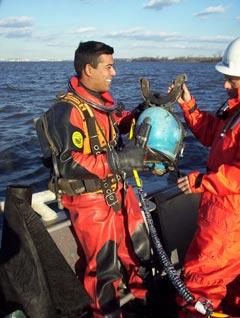|
|
| | | Recent Activities
Coastal and estuarine habitats include marshes, forested wetlands, oyster reefs, seagrass beds, beaches, tidal streams, and riparian forests. These habitats are vital not only for fish, birds, and other wildlife, but for human communities as well. They help to protect against flooding, improve water quality, provide recreational opportunities, and support commercial fisheries and tourism. As a natural resource trustee under the Clean Water Act, the Comprehensive Environmental Response, Compensation and Liability Act, the Oil Pollution Act and the National Marine Sanctuaries Act, NOAA conducts restoration activities along the nation’s coastal zones and estuaries. The Estuary Restoration Act of 2000 also mandates NOAA’s restoration activities.
NOS’s Office of Response and Restoration addresses environmental threats to coastal resources that result from oil and chemical spills, chronic releases from Superfund sites, and damage to resources within the nation’s marine sanctuaries. The office also works with the responsible parties, other NOAA offices, and other agencies to conduct hazardous waste site investigations, assess natural resource damage, and implement coastal ecosystem restoration projects. The office also pursues legal action, if necessary, against those parties responsible for the harm and works with parties to restore damaged resources. NOS restoration scientists also conduct ecological research and test restoration approaches to determine the most effective restorative measures. NOS scientists also have developed several tools using geographic information system technology to build state and local capacities for restoration planning and implementation. These tools include interactive watershed mapping projects and databases. Once restorative measures are implemented, NOS scientists monitor the ecosystem response to allow for adjustments to the restoration approach when necessary. In addition, NOS scientists also help local groups design monitoring plans that will accurately gauge the success of restoration projects and determine the need for any further action.
NOS restoration experts also participate in an interagency restoration council created by the Estuary Restoration Act (ERA) of 2000. With staff from the Restoration Center of NOAA’s National Marine Fisheries Service (NMFS), NOS supports an interagency workgroup tasked with developing a National Estuary Habitat Restoration Strategy. This workgroup coordinates restoration activities with other federal agencies and with private sector partners. In addition, NOS is working to develop monitoring protocols and guidance that will be used to implement the ERA. NOS and NMFS also are developing a database that will help track progress in restoring estuarine habitat.
Anacostia River. Read about NOAA's restoration efforts on the Anacostia River, which runs through Maryland and the District of Columbia.
|
Educational ResourcesNatural Resource Restoration Lesson Plan Prince William's Oily Mess: A Tale of Recovery Discovery Story Nonpoint Source Pollution Discovery Kit
Restoring Maryland's Patuxent River: Summer 2004
|
|||||||||||||||||||
- NOS Program Offices
- Center for Operational Oceanographic Products and Services
- National Centers for Coastal Ocean Science
- NOAA Coastal Services Center
- National Geodetic Survey
- Office of Coast Survey
- Office of National Marine Sanctuaries
- Office of Ocean and Coastal Resource Management
- Office of Response and Restoration

Revised October 22, 2007
| Questions, Comments? Contact Us | Report
Error | Disclaimer | About
the Site | User Survey
National Oceanic and Atmospheric
Administration | U.S.
Department of Commerce | USA.gov
http://oceanservice.noaa.gov/topics/coasts/restoration/welcome.html



